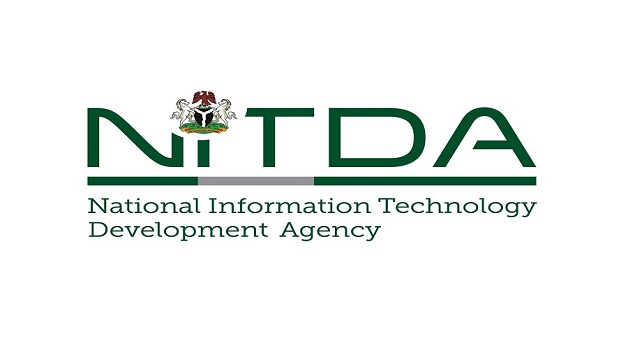E-Business
Report Says 65 Per Cent of Businesses Faced Cyberattacks in Last 12 Months

Most cybersecurity landscape data is focused on outsider attacks; however, recent findings reveal that insider threats are becoming more common.

Attacks originating from within the company are much more elusive since standard security practices do not work.
According to data analyzed by Atlas VPN, 65% of organizations suffered from one or more insider attacks in the last 12 months.
Insider threats come from employees or other internal users, such as contractors, that have access to the company’s internal databases.
There are two types of malicious insiders — those with harmful intent and those who are simply negligent.
An online survey of 457 cybersecurity professionals, conducted in June of 2020 by Darktrace, found that 41% of businesses experienced between 1 and 5 insider attacks in the last 12 months.
Moreover, 12% of respondents stated that they saw between 6-10 insider attacks in the last year — another 5% of surveyed professionals encountered from 11 to 20 attacks.
Finally, over 7% of company representatives stated that they experienced more than 20 attacks in the last 12 months.
Compared to last year, businesses dealt with insider attacks more often.
As many as 72% of cybersecurity professionals believe that employee security violations became more frequent in 2020.
Insider attacks are costly
Incidents caused by insider threats are becoming more common, so let’s look at the monetary damages caused by these events.
As a side-note, if the incident does go public, companies’ public image gets hurt, which, in the long-run, can cause even more losses than the immediate incident remediation costs.
Nearly half (49%) of surveyed leaders stated that the remediations after an insider attack cost less than $100 thousand.
Another 30% of respondents expressed that monetary damages caused by a single incident are anywhere between $100 thousand and $500 thousand.
A smaller part of the surveyed experts – 12%, stated that the average cost of remediation after an attack is somewhere between $500 thousand to $1 million.
Finally, 5% of companies reveal that the cost of an attack is around $1 million to $2 million, and 2% state that remediation costs exceed $2 million per successful attack.
One of the most recent and well-known hacking incidents caused by a malicious insider is the Twitter bitcoin scam that happened on July 15th, 2020.
Here, cybercriminals took over multiple high-profile Twitter accounts to promote a Bitcoin scam.
After the incident, Twitter reported that an employee cooperated with cybercriminals to carry out the hack.
This scam appeared in front of 37% of Twitter’s userbase. Luckily, damages only slightly exceeded $110 thousand in Bitcoin, as Twitter deleted those tweets quickly.
Protection from insider threats
Unfortunately, most security practices deployed to protect the company from external attacks fall completely flat when it comes to defending from insider threats.
Outside hackers have to find ways to break through firewalls and other security measures to get into the company’s databases.
On the other hand, many internal users already have access to those databases, so the same safety steps are not applicable.
Here are the steps to reduce security risks from insider threats:
Make sure that employees only have access to data and tools they need to do their jobs. The fewer people have access to a database, the less is the risk that either malicious or negligent employees can expose the data.
Employee training. While this might not help against disgruntled employees, it is the best tool for the company to make sure negligent insiders are educated and security risks are minimized.
E-Business
NITDA, API Partner Against Harmful Online Content

National Information Technology Development Agency (NITDA), in partnership with the Advocacy for Policy and Innovation (API), has convened a one-day workshop in Abuja to advance dialogue on the draft Online Harm Protection (OHP) Bill to confront harmful online content.

The bill, a rights-based, locally rooted, and multi-stakeholder initiative, is aimed at addressing the challenges of the digital age.
The event, which held yesterday, brought together government officials, civil society, academics, digital platforms, and legal experts to shape a policy framework designed to combat online ills such as cyberbullying, disinformation, hate speech, digital exploitation, and gender-based violence, while safeguarding democratic freedoms and digital inclusion.
In his keynote remarks, Kashifu Inuwa, director general, NITDA urged a paradigm shift in the way society engages with digital technologies.
“For almost two decades, we have viewed digital technology through a consumer lens. But these technologies are not just products and services. They are transforming how we live, work, and interact. They shape our politics, our society, and our democracy,” he said.
Warning against unaccountable digital power in the hands of private corporations, the DG likened the digital journey to the tale of Alice in Wonderland, where initial fascination with innovation has given way to deeper concerns about privacy, autonomy, and manipulation by big tech platforms.
“We thought we were using Google, but now we realise Google is using us. Social media, once a tool of expression, has become a tool of surveillance and influence,” Inuwa noted.
He, therefore, emphasised the urgency of developing a democratic and accountable framework. He explained that following the 2021 Twitter ban, NITDA facilitated dialogue between the government and platform operators, leading to a Code of Practice that stressed Nigeria’s sovereignty and legal standards.
According to him, the same process birthed the multi-stakeholder steering committee and the OHP White Paper in December 2024, laying the foundation for the current legislative push.
Earlier in her opening remarks, Victoria Manya, co-founder, API, observed the moral and civic necessity of the bill.
Her words: “The internet did not break society, it merely revealed its unfiltered version. Every day, Nigerians are exposed to harassment, disinformation, exploitation, and even algorithmic violence. The OHP Bill is not a war on the Internet. It is a peace offering to its users, a social contract for a digital future that is safe, inclusive, and democratic.
“We cannot answer the question of algorithmic power with unchecked state control. We must answer it with shared, rights-based governance. This bill must not be written for the people, but with them.”
E-Business
How AI Alert by Airtel is Transforming Mobile Security in Africa

These days, people rely heavily on their mobile phones for talking, texting, banking, social media, and storing important personal information. Because of this, scammers and spammers often target phone users.

Mobile fraud, like fake SMS messages and scams, is becoming more common and putting millions at risk of losing money or having their private details stolen.
Airtel’s new AI-powered Spam Alert Service offers a smart and timely way to fight back, marking a major step forward in protecting mobile users in Africa.
A brief look at mobile fraud and spam
Mobile fraud and spam are problems around the world, but they hit harder in places where mobile phone use is growing fast, and safety measures haven’t caught up.
A 2024 report from GSMA Mobile Economy shows that more than 20% of mobile users globally have experienced some kind of mobile fraud, with spam texts being one of the most common.
In Nigeria, the Nigerian Communications Commission (NCC) has noted a sharp rise in scam messages and fake calls, leading to yearly losses in the hundreds of millions of dollars.
These spam texts often include fake links, harmful ads, or tricks to steal personal details. Many people get caught without knowing, which can lead to stolen bank money, identity theft, or damaged devices.
Older spam blockers only work on certain phones or apps, leaving many people, especially those using basic phones, without protection.
Why Airtel’s AI Spam Alert Service stands out
Airtel, a top telecom company in Africa, has launched a new and free service called the AI Spam Alert Service. It’s the first of its kind in Africa and aims to protect mobile users from spam text messages as they come in.
What makes this service different is that it doesn’t read or check the actual message content. Instead, it uses advanced artificial intelligence to quickly study the sender’s behaviour using over 250 signs or patterns, all within a fraction of a second.
Some of those parameters, according to Airtel, includes:
- How frequently the sender changes SIM cards.
- The volume and frequency of messages sent by the message initiator to different recipients.
- The geographical spread of the recipient numbers, whether messages are targeted locally or dispersed nationwide.
- Whether the sender receives replies or only sends messages.
- A cross-reference of numbers previously reported for spam activity.
The AI completes this analysis in just 2 milliseconds, faster than the blink of an eye, allowing real-time alerts to subscribers as suspected spam messages arrive.
How Airtel’s Spam Alert Service improves mobile safety and trust
Airtel’s new AI-powered spam alert system is set to make a big difference in mobile security across Nigeria and the rest of Africa. Instead of depending on users to block spam themselves, the service works directly through the network to stop suspicious messages before they reach people’s phones.
This kind of technology helps users feel safer and more confident using mobile networks—especially as more people rely on their phones for banking and other money-related services.
A 2025 report by McKinsey Digital shows that many Africans worry about mobile security when using digital financial tools. By reducing the risk of spam and fraud, Airtel is not only protecting its users but also helping to build a safer digital space where more people can take part in the growing mobile economy.
According to Airtel, within two months of its launch, the spam alert service system has identified 9,667,008 messages as potential spam.
Why this is a game changer
By building a service that is first-of-its-kind in Africa, Airtel is leading the way in offering spam alerts, powered by AI directly on its network, for over 150 million subscribers across the continent.
In addition, the service is quick, spotting suspicious sender activity in just milliseconds without reading users’ messages.
Finally, the service is free and requires no app downloads or extra setup. Airtel says the turns on automatically, making it easy for everyone to stay protected, even those using basic phones.
By sending signals to users before problems happen, Airtel boosts trust and encourages more people to safely use mobile money and other digital services.
Scammers are always finding new ways to trick consumers through the ubiquitous mobile phones, so increased demand for security improvements is, understandably, shifting to telecom companies.
Airtel’s AI Spam Alert Service is a strong and timely move toward better, smarter protection for users. As more people start using the service, it should help cut down fraud, keep personal information safe, and make mobile use more enjoyable.
As African economies continue to grow more digital, users of telecom services will need more secure and reliable ways to communicate, and Airtel is leading the way towards that safe future.
E-Business
Microsoft Server Hack Likely Solo Actor, Thousands at Risk

A widespread cyberattack targeting Microsoft’s (MSFT.O) server software used by thousands of government agencies and businesses for internal document sharing was likely orchestrated by a single actor, a cybersecurity researcher said on Monday.

Microsoft issued an alert on Saturday warning of “active attacks” on on-premise SharePoint servers.
The company clarified that SharePoint Online, part of the Microsoft 365 cloud suite, was not affected by the exploit, which is considered a “zero-day” vulnerability due to its previously undiscovered nature.
“Based on the consistency of the tradecraft seen across observed attacks, the campaign launched on Friday appears to be a single actor. However, it’s possible that this will quickly change,” Rafe Pilling, director of Threat Intelligence at Sophos, a British cybersecurity firm.
That tradecraft included the sending of the same digital payload to multiple targets, Pilling added.
Microsoft said it had “provided security updates and encourages customers to install them,” a company spokesperson said in an emailed statement.
It was not clear who was behind the ongoing hack. The FBI said on Sunday it was aware of the attacks and was working closely with its federal and private-sector partners, but offered no other details.
Britain’s National Cyber Security Centre did not immediately respond to a request for comment.
The Washington Post said unidentified actors in the past few days had exploited a flaw to launch an attack that targeted U.S. and international agencies and businesses.
According to data from Shodan, a search engine that helps to identify internet-linked equipment, over 8,000 servers online could theoretically have already been compromised by hackers.
Those servers include major industrial firms, banks, auditors, healthcare companies, and several U.S. state-level and international government entities.
“The SharePoint incident appears to have created a broad level of compromise across a range of servers globally,” said Daniel Card of British cybersecurity consultancy, PwnDefend.
“Taking an assumed breach approach is wise, and it’s also important to understand that just applying the patch isn’t all that is required here.”

 E-Financial2 days ago
E-Financial2 days agoUBA’s LEO Becomes Africa’s First Chatbot to Enable Cross-Border Payments

 News2 days ago
News2 days agoUN Appoints Sa’id, Nigerian to Nuclear Panel

 E-Business2 days ago
E-Business2 days agoNIMC Enrolls 122m for NIN, Cuts Extortion by 40 Percent

 Telecom2 days ago
Telecom2 days agoMTN Urges Nigerian to Regards Telecom Infrastructure as National Assets

 Telecom1 day ago
Telecom1 day agoMTN Nigeria Rewards 1,500+ Winners with ₦290m in Mega Billion Promo

 General News2 days ago
General News2 days agoAppeal Court Nullifies Registration of ‘KPMG Professional Services’

 E-Financial1 day ago
E-Financial1 day agoNaira Slides Again, Hits ₦1,532.34/$ Despite CBN’s Dollar Push

 Telecom2 days ago
Telecom2 days agoBitget Launches $6M Global Crypto Trading Contest with New Competitive Segments


























